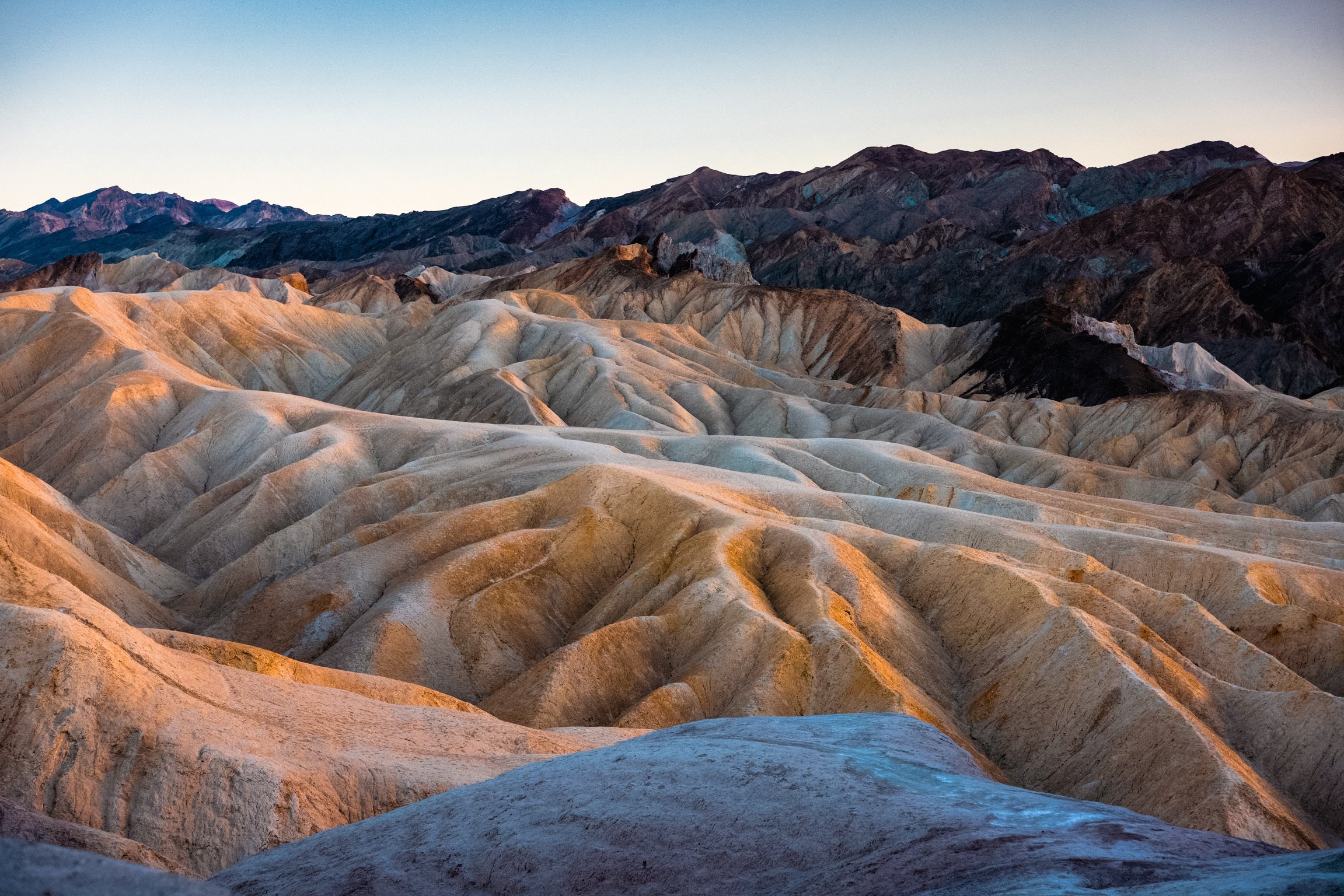How to Spend 24 Hours in Death Valley National Park
Death Valley National Park is easily one of the most unique US National Parks. It has salt flats, mountains, sand dunes, incredible starry night skies, and interesting geological features throughout the park. We recommend visiting the park outside the summer months as the temperatures can be unbearable during this time of year. We went during February when the average high temperature is 73ºF and the weather was perfect. As a comparison, temperatures in the summer can dangerously rise above 120ºF. Death Valley is well-known for its extreme heat as the hottest temperature ever recorded on Earth was measured here during the summer of 1913 to be 134ºF. Other benefits to visiting in the winter include: limited crowds, snow-capped mountains across the valley, and improved clarity when stargazing. In this guide, we hope to help you make the most with limited time in Death Valley National Park.
One day in Death Valley National Park:
Stop 1: Sunrise at Mesquite Flat Sand Dunes
How the light hits the sand dunes here at sunrise is truly stunning. We know it may be tempting to sleep in but trust us when we say that sunrise is 100% worth it. The juxtaposition of the giant sand dunes with the mountains in the distance is unlike anything we had ever seen. More of the larger and undisturbed sand dunes are farther away from the parking lot so make sure to plan your time accordingly.
Stop 2: Badwater Basin
At 282 feet below sea level, Badwater Basin is the lowest elevation in North America. There are fascinating geometric patterns along the salt flats here. Make sure to walk about a mile or so out onto the salt flats in order to find the best views of the salt polygons. If you look up on the cliffs of the Black Mountains to the east, you will find a sign indicating where sea level is giving you a unique perspective of this low point.
Stop 3: Dante’s View
At 5,475 feet above sea level, Dante’s View overlooks Badwater Basin and the entire valley. Telescope Peak on the opposite side of the valley is the highest point in Death Valley at about 11,043 feet above sea level. This viewpoint is reachable by car, so it is easily accessible to all visitors. From the parking lot, there are also several paths/hikes you can take if you want additional panoramic views.
Stop 4: Artists Drive
This one-way loop will take you to one of the well known Artists Palette. There is a gradient of colors across the hills here that were formed by the oxidation of metals over many years. In all honesty, we were a little underwhelmed by Artists Palette as the colors were not nearly as vibrant as we envisioned. It was a nice drive through rugged hills and vistas nevertheless.
Stop 5: Zabriskie Point at sunset
End your day at this ultimate sunset location where you can view the surrounding badlands in the direction of the setting sun. The remarkable landscapes with all of its textures and layers are even more beautiful in the fading sunlight. From the parking lot, Zabriskie Point is a ¼ mile walk up a hill on a paved trail.
Stop 6: Stargazing
End your day by enjoying the view of the Milky Way. Death Valley National Park is a designated International Dark Sky Park making for epic starry night viewing.
If you have more time in Death Valley, you may want to consider these add on options:
Golden Canyon
Desolation Canyon
Devil’s Golf Course
Ubehebe Crater
The Racetrack
Mosaic Canyon
Eureka Dunes
If you are considering staying overnight in Death Valley, there are only a few options which often require advanced planning. There are 2 central hubs in the park for gas and food options including Furnace Creek and Stovepipe Wells. There are 3 hotel options in the park including: the Inn at Death Valley (in Furnace Creek), the Ranch at Death Valley (in Furnace Creek), and Stovepipe Wells Village Hotel (in Stovepipe Wells). All 3 hotels are pretty pricey and tend to book out in advance so make sure to plan accordingly. There are additionally various campgrounds in the park including: Furnace Creek Campground, Sunset Campground, Stovepipe Wells Campground, Texas Springs Campground, and Mesquite Spring Campground. All campgrounds are first come first serve with the exception of Furnace Creek Campground where reservations can be made in advance. The campgrounds are also known to attract coyotes so keep on the lookout but do not feed the wildlife.
Overall, we really enjoyed our short time in Death Valley National Park. There are so many unique areas that you won’t find anywhere else in the United States. The geological features make for beautiful views, but it is also known as the land of extremes so make sure to be safe and plan accordingly. Always bring plenty of water and do not underestimate the temperatures. Death Valley is one of those places that we definitely plan to revisit at some point.











